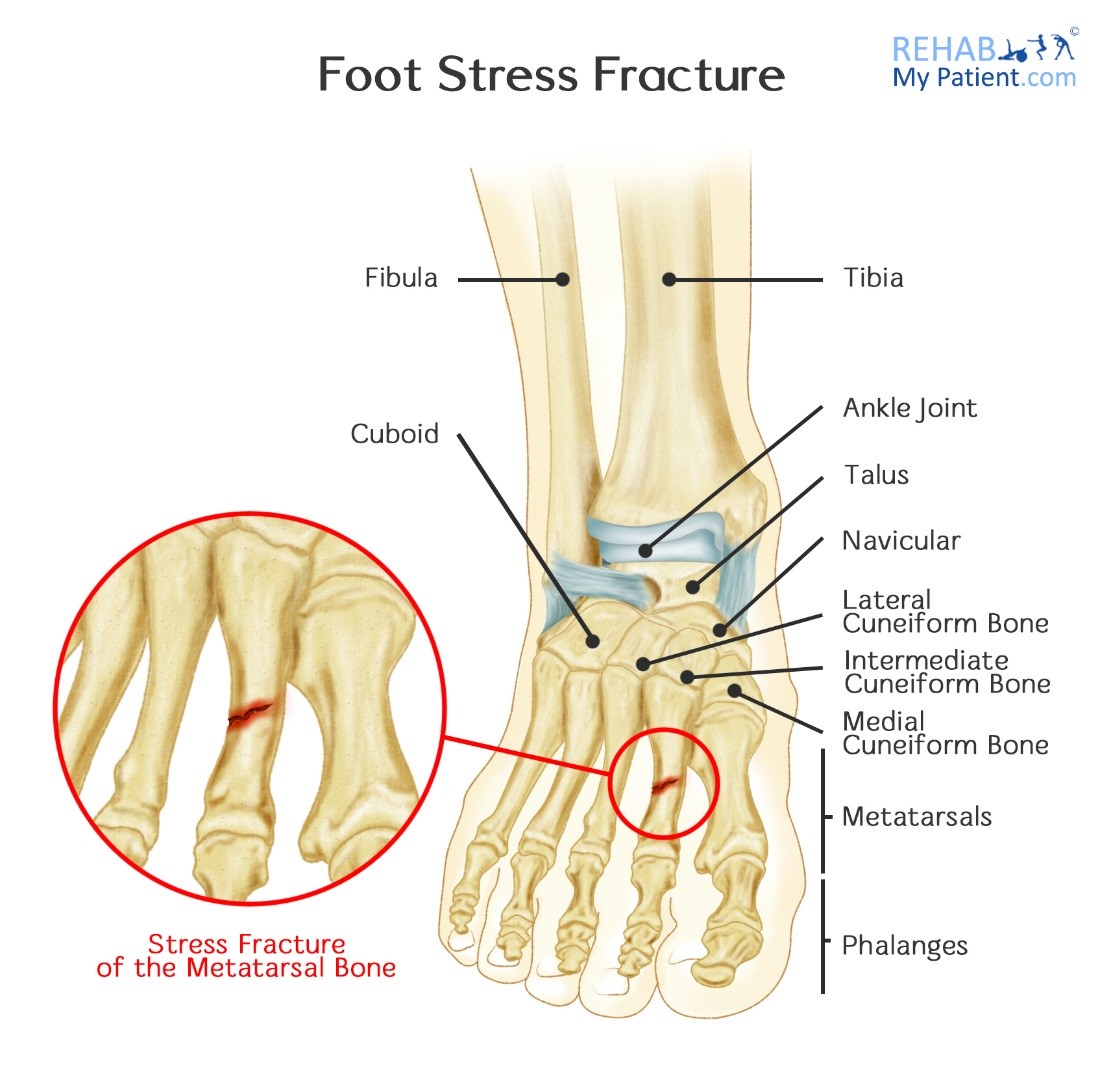
There are many different fractures that can occur in the foot, with stress fractures being some of the more common foot fractures. A stress fracture is usually a crack found in the bone. They tend to develop from being overused, such as that of high-impact sports like basketball or long distance running. Most of the time, the fracture will occur in the weight-bearing bones of the lower leg and the foot. Studies indicate that athletes who participate in tennis, gymnastics, basketball, dance and track and field are at an increased risk of developing a fracture in the foot. When it comes to all of the aforementioned sports, the repeated stress placed on the foot from hitting the ground is likely to cause a number of problems. Rest is the main element to recovering from fractures.
Foot Fracture Anatomy
Fractures occur from overusing the foot. Whenever the muscles are overly tired, they aren’t able to lessen the shock from any repeated impacts. If this happens, the muscles will end up transferring the stress onto the bones, which in turn, creates fractures and small cracks.
One of the most common sites for fractures is in the second and the third metatarsals of the foot. These fractures are also common in the heel, the bone on the top part of the midfoot and the outer bone in the lower leg.

How to Treat a Foot Fracture:
- Rest
Take the time to rest from any activities that caused the fracture in the beginning. On average, it takes anywhere from six to eight weeks for the fracture to heal completely. During that course of time, try switching to aerobic activities that are going to place less stress on the foot and the leg. Cycling and swimming are exceptional alternatives. Avoid participating in any physical activities on the injured foot until you have been given the approval of a doctor.
- Protective Footwear
To reduce the amount of stress placed on the leg and foot, it might be necessary to wear protective footwear. This might consist of a stiff-soled shoe, removable fracture brace shoe or a wooden-soled sandal.
- Casts
Fractures in the fifth metatarsal bone or the talus or navicular bones end up taking longer to heal. The doctor might apply a cast to the foot to make sure the bones remain in a fixed position and remove all of the stress placed onto the leg. Casts are a form of external fixation. To help alleviate any weight on the leg and foot, you might have to use crutches until the bone has had time to heal. An alternative to a cast is a walking boot, a sophisticated boot that allows the user to walk with minimal weight bearing.
- Ultrasound
Guidance from the National Institute of Clinical Excellence shows that fracture repair can be sped up by using low intensity pulsed ultrasound.
Tips:
- Maintain a healthy diet. Consume foods that are rich in Vitamin-D and calcium to help build up bone strength.
- Always use the proper sports equipment. Avoid wearing any running shoes that are worn or old.
- Begin any new sporting activities slowly. Increase your speed, time and distance slowly. On average, 10 percent per week is ideal.
- Alternate the activities you participate in, such as that of jogging with cycling or swimming.
- If you have any swelling or pain that returns, you need to rest for a couple of days. When the pain continues, seek medical attention.
Sign Up
Sign up for your free trial now!
Get started with Rehab My Patient today and revolutionize your exercise prescription process for effective rehabilitation.
Start Your 14-Day Free Trial